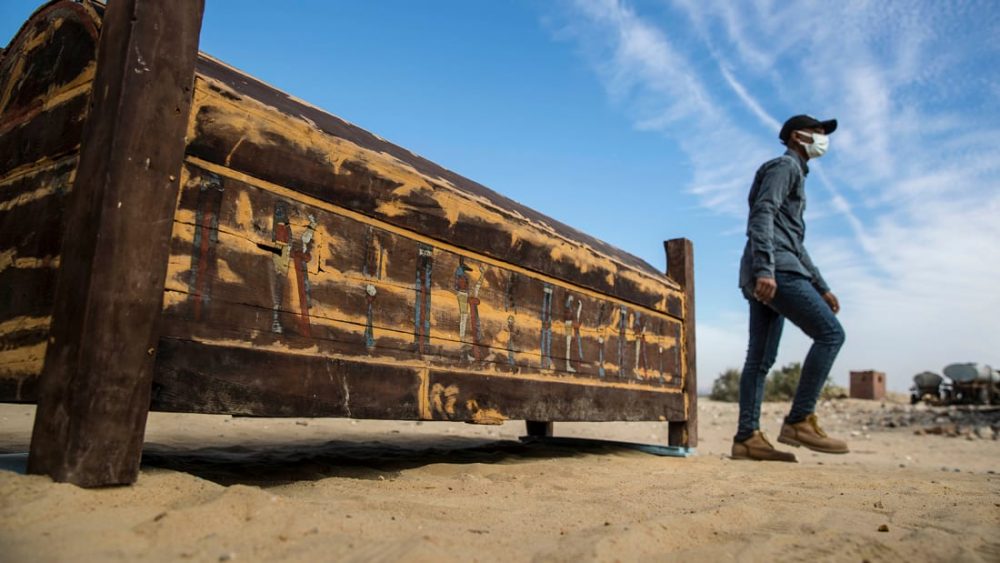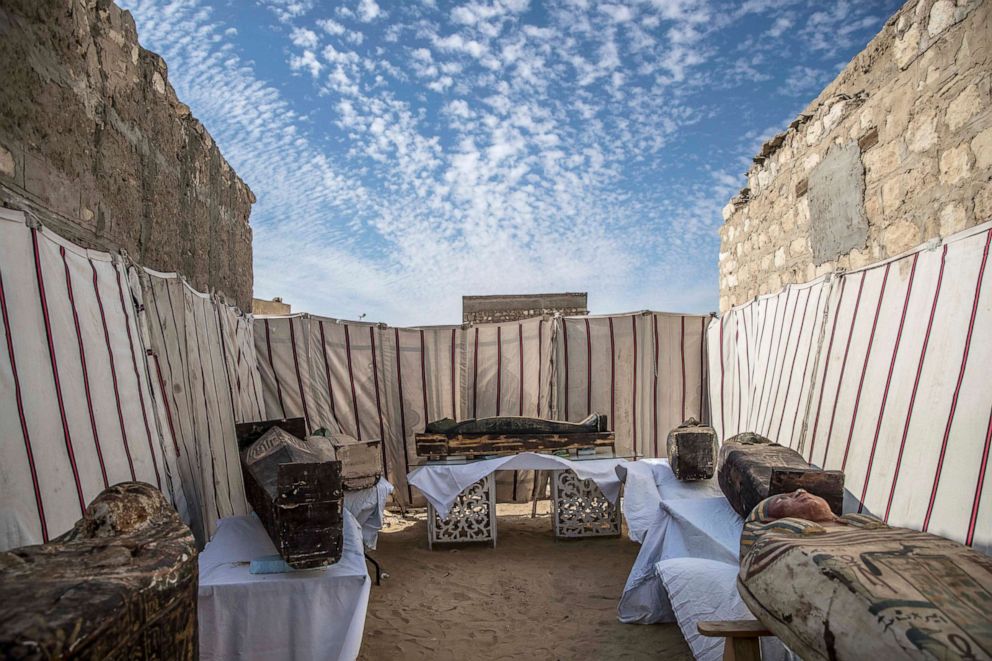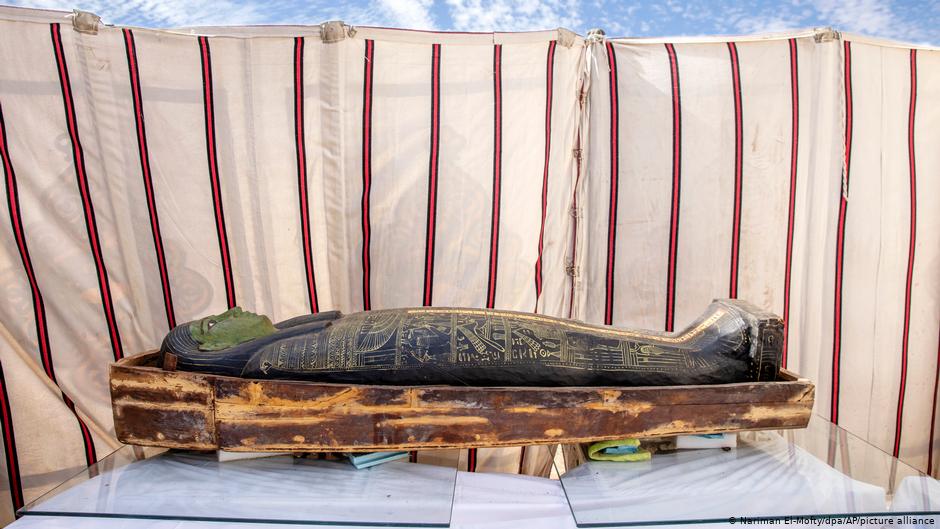Egypt Reveals “History-Changing” Discovery of 3,000-Year Old Mummies, Temple and Book of the Dead at Saqqara
As early as January, Egypt has already announced the first major discovery of the year in the ancient treasure throve we know as the Saqqara necropolis.
We all remember October and November last year when more than 150 ancient coffins were discovered in the necropolis. This was the largest discovery of 2020 and in 2021, I believe Saqqara will once again top this archaeological list.
The focal point of this new wave of discoveries has to be the funerary temple of Queen Nearit. Although parts of the temple were already discovered years ago, this can be considered the official reveal as most of the territory has now been excavated.

Next, the archaeological team unearthed 52 burial shafts that contained more than 50 sarcophagi dating back to the New Kingdom of Egypt, approximately 1570 – 1069 BC.
This marks the first discovery of artefacts from 3000 BC or earlier on the territory of the Saqqara necropolis. In all previous cases, the coffins, sarcophagi, and all other precious artefacts were from around 500 BC.
Among the coffins and the temple, archaeologists found a plethora of other artefacts from the period of the New Kingdom including statues of deities, toys, ancient games, and many others.

Perhaps the most curious item, at least to me, is the 4-meter long papyrus discovered in one of the shafts. What makes it so special and rare is what is written on it. It represents Chapter 17 of the mythical ancient Egyptian Book of the Dead, and unlike most cases, it also came with the owner’s name.
Reference: The Book of the Dead is a collection of ancient Egyptian religious texts and hymns. The ancient Egyptians placed copies of it in tombs because they believed that it would help the deceased find prosperity in the afterlife. Discovering parts of it in a tomb is an incredibly rare find.
According to Dr. Zahi Hawass, the legendary Egyptian archaeologist, these discoveries will rewrite the history of the New Kingdom and especially on life in the region of Saqqara.

Of course, excavations in Saqqara will undoubtedly continue for decades and we can expect countless other major discoveries.
For instance, Dr. Hawass also revealed the discovery of a one-of-a-kind mud-brick shrine that is yet to be excavated. Initial calculations revealed that it is at least 24 meters deep and there should be a burial chamber beneath it. We will surely hear more about it soon enough.
There is no doubt now that in the future, Saqqara will become a major tourist destination in Egypt, given the endless stream of discoveries that are being made. If only we could fast-forward ahead in time instead of waiting for the next big reveal.





